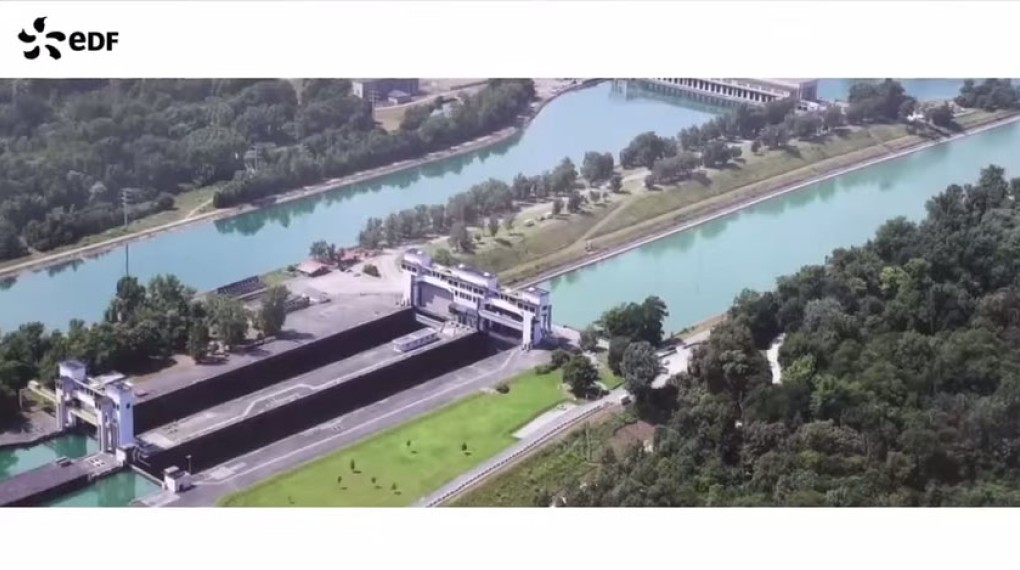Biodiversity, the central focus of our environmental programme
As a responsible energy company, EDF has made a priority of fostering biodiversity by blending its facilities into their environment. At hydroelectric facilities, the policy has been implemented through programmes that are coordinated with local stakeholders and designed to protect aquatic plants and animals.

Conserving biodiversity: a legal obligation and a company goal
Introduced in 2006, EDF’s biodiversity policy embodies the Group’s determination to reduce the impact of its activities on the environment to the greatest extent possible by protecting and restoring natural areas.
At hydroelectric facilities, the policy is implemented within the framework of the French LEMA Law (Law on Water and the Protection of Aquatic Environments). LEMA requires operators to maintain “minimum flow” downstream from hydroelectric power plants to protect the living environment and species.
EDF also builds fish passes for the various species affected by dams, to ensure that dams do not obstruct the movement of aquatic fauna.
EDF has installed 200 fish passages in its dams to foster reproduction of migratory fish species.
Building fish passes and artificial rivers and lowering dam heights enable salmon, shad and eels to migrate and reproduce in their spawning grounds. Europe’s largest fish pass, opened in Gambsheim in 2006, enabled salmon to return to the Rhine River.
In 2013 a fish pass with a length of about 700 metres and a height of some 13 metres was built at the Strasbourg hydroelectric facility.
Beaver passages are also built. EDF worked with the Fédération Rhône-Alpes de Protection de la Nature (FRAPNA) conservation group to commission an “escape ramp” at the Jons dam in the Ain department in 2011. It enables beavers trapped by the current in the canal supplying the machines at the hydroelectric plant to easily reach the banks. The system has had a major impact: 3,000 beavers now live in the waters of the Rhône River.
Partnering with national and regional parks and local stakeholders
EDF regularly signs partnership agreements with biodiversity stakeholders representing institutions and civil society. Partners include nature parks, the Bird Protection League (LPO) and the National Forests Office (ONF), as well as the scientific community and local non-profit organisations.
The Group has been working with the Pyrenees National Park, for example, for more than 20 years. Agreements were signed in 2014 to step up coordination. The start of every project is subject to authorisation by the park director, who approves helicopter transport scheduled at dams. Identification of archaeological remains was carried out systematically in all valleys with a view to protecting them in the event of works. A law also provides for the reintroduction of the Iberian wild goat.
In 2013, EDF earmarked €3 million for biodiversity protection studies.
In the Ariège department, EDF supports the LPO’s bearded vulture protection programme. This bird of prey is Europe’s most threatened: only 130 pairs remain in the Pyrenees, 30 of them in France. Agreements have been signed with the Auzat and Biros hydroelectric plants to reduce their activity during the breeding season of the species, which is particularly sensitive to disruption. The birds have since continued to nest at these sites.
Lastly, EDF works with local stakeholders to provide environmental offsets at its sites, as provided by law. In the Combe-Madame Valley in the Isère department, EDF-operated hydroelectric facilities are located in the natural habitat of the black grouse, a sedentary bird that is an endangered species. An ecosystem to foster its return and that of other Galliformes (fowl-like birds) was recreated on a 130 hectare plot as part of a project overseen by the Regional Environment, Development and Housing Directorate (DREAL).

Your browser does not support javascript.
To enable you to access the information, we suggest you view the video in a new tab.

